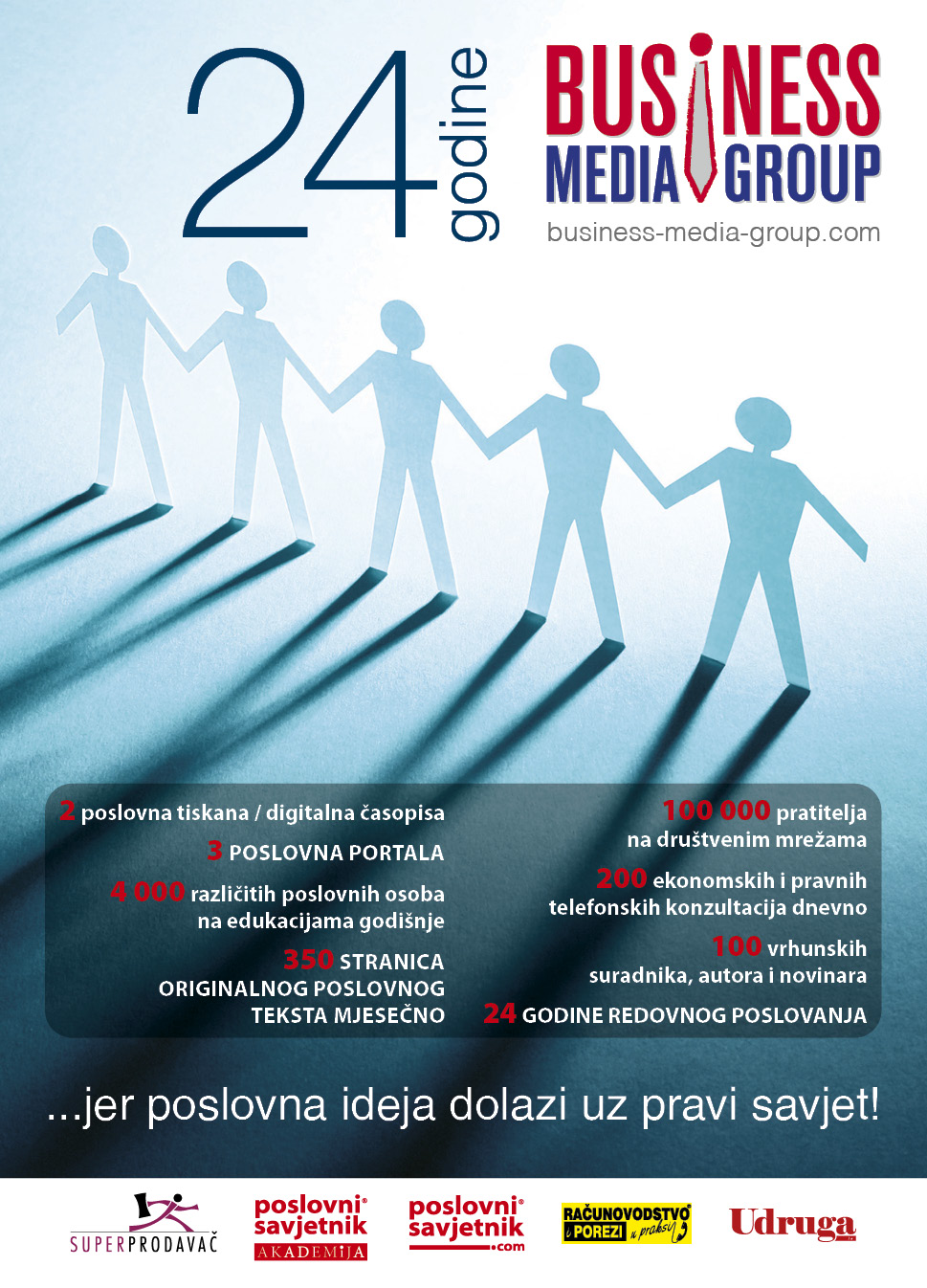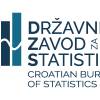John Lodder: How Employee engagement grows with Shared Ownership and Authentic Leadership

My February column is a red thread: From recent Gallup research about Employee (dis)engagement and Organization Culture, via ‘Shared Ownership’ to Four Paradigm Shifts leading to Authentic Leadership and ending with Conscious Quitting. I hope it inspires you to think a bit further toward an even brighter future.
Global Employee (Dis) Engagement
Employee engagement is the involvement and enthusiasm of employees in their work, workplace and their leader. Gallup’s global survey of last January showed that global engagement stayed low at 21% and dis-engagement high at 19% as shown in Figure 1.
Figure 1: Global Employee (dis)engagement.
At the same time we see in Figure 2 that of American employees only 21% have trust in their Leaders.
How much trust in leadership do you think there is in your company?
Figure 2: Trust in American Leadership.
6 Trends Leaders Need to Navigate This Year
For leaders, 2022 was defined by a war for talent and the office. Declining employee engagement and wellbeing painted a grim picture of disrupted workplaces across the world.
Some workers reevaluated their work lives, and others rethought their careers entirely. Some even took to social media and voiced their frustrations through testimonials about “quiet quitting,” and “quiet firing.”
Many workers transitioned into “hybrid work,” splitting time between working from home and the office. There were many debates about how often employees should be in the office and who should make those decisions; underneath was a lack of trust from management. Employee-employer relations cooled down. In some cases leaders demanded all workers to return on-site full time, and some employees simply ignored the rules.
Leading teams and organizations to calmer waters has never felt quite like this.
Continues economic headwinds on the horizon and low consumer confidence brought a great deal of uncertainty about the future of the workplace. One thing is certain:
How we work and live has changed … and we must adapt!
So, what’s next for 2023 and on what should leaders focus their efforts?
Gallup offers 6 most important findings of 2022 to follow in the new year:
1. The employee engagement decline continues.
Figure 3: Employee engagement and Best Practices.
Employee engagement is critical to the productivity, morale, development and retention of every organization’s workforce. Engaged employees are investing in and enthusiastic about their work and workplace, they consistently outperform and stay longer than less-engaged employees.
Employee engagement in the U.S. had been steadily increasing for a decade when the COVID-19 pandemic hit. Amazingly, engagement continued to reach record highs in 2020 amid efforts to save businesses and support employees. But as the pandemic wore on and leadership efforts waned, engagement began to decline in mid-2021.
By early 2022, U.S. employee engagement slumped to a seven-year low with 32% of employees engaged and 17% actively disengaged at work. The decline continued throughout 2022 as engagement levels remained relatively unchanged.
Looking forward, the stagnation of employee engagement is one of the biggest threats to organizations and entire economies as we transition to 2023 and beyond. Gallup research has long tied engagement to important organizational outcomes, such as profitability, productivity, customer service, retention, safety and wellbeing.
In fact, employees who are not engaged or who are actively disengaged cost the world $7.8 trillion in lost productivity (11% of global GDP) last year, according to Gallup’s ‘State of the Global Workplace 2022 Report’: https://www.gallup.com/workplace/349484/state-of-the-global-workplace.aspx
The good news?
Organizations dedicated to improving employee engagement have long weathered these storms and outperformed their less-engaged competitors in the process as you can see in Figure 3.
Not only can progress be made on engagement in 2023, but our Gallup Exceptional Workplace Award winning organizations currently cultivate more than twice as many engaged employees as the national average.
2. Hybrid work is here to stay -- the office will never be the same.
Figure 4: Work locations of US employees.
In 2023, the “Great Global Work-From-Home Experiment” will likely find its equilibrium. Approximately 56% of U.S. full-time employees are remote-capable, and about half of those employees are now working as hybrid workers. Only two in 10 are fully on-site, and a mere 6% of remote-capable workers want to be fully on-site going forward. Long term, organizations are planning for their remote-capable workforce to include:
- 55% hybrid workers
- 22% fully remote workers
- 23% fully on-site workers
Despite some leaders’ wishes, remote work flexibility is here to stay.
Nearly one-third of hybrid workers and six in 10 fully remote workers say they would be “extremely likely” to look for opportunities with other organizations if their employer decides not to offer remote work flexibility in the future.
Going forward, asking employees where they work best will be an important piece to the “making hybrid working work” puzzle. When their preferred work location does not match their actual location, employees are substantially less engaged, more likely to burn out and more likely to leave their employer.
Hybrid teams must also learn to coordinate their schedules in a way that optimizes team collaboration and ensures customer needs are met. Gallup recently discovered that hybrid workers are most engaged when their team (vs. the company or individuals) collaboratively sets work schedules and policies.
This follows the growing trend in organizations that work with self-managing and/or autonomous teams.
3. Don’t confuse being in the office with culture. Figure 5: Connection to organization culture.
One of Gallup’s most striking findings from 2022 was that hybrid workers feel closer to their organization’s culture than do fully on-site workers. This challenges the idea that “the office” is synonymous with “culture.” In-person interactions are powerful, but hybrid workers are likely getting something else, more intentional in-person experiences and online experiences.
They may also feel that, when they are given greater flexibility, their organization cares about and trusts them more, which strengthens the bond with their employer.
Hybrid work can help move organizations out of a “default mode” and clarify employer and employee expectations.
Today’s new hybrid workplace will challenge many leaders to reinvent the meaning, purpose and experience of their workplace culture. They will have to redefine the “why” and “how” behind their work strategies, practices and norms. Above all, leaders should involve employees more to make them feel more included in what that new culture will be. After all, a workplace culture is ultimately defined by “how we work together.”
4. The hybrid workplace will challenge managers in new ways.
Managers are the lynchpin that holds teams together. The pandemic, remote work and now, the return to the office transitions, have made their jobs more difficult than ever. Managers are constantly stuck between frustrated leaders and team members. They are the translators and scapegoats.
Hybrid work brings a new wrinkle to their jobs with a unique set of communication and coordination challenges and no ‘standard’ playbooks to fall back on.
Although the majority of employees prefer hybrid work, Gallup analysis shows that managers are facing new burdens from it. Hybrid work has simply put more on their plate, from the daily coordination of employees who are on different schedules and working from different places, to the challenge of not being able to observe all of the real-time interactions of the team they’re managing.
As a result, hybrid managers are now more burned out than their direct reports and their bosses. In fact, they’re feeling more burned out and less connected to their company culture than managers who lead fully remote or on-site teams. The problem is that the hybrid work transition has focused mainly on supporting individual contributors. And since individual contributors are more likely to benefit from executing their tasks alone, they also benefit from doing those tasks in a way that works best for them.
Managers are different. They are in charge of fostering things like productivity, collaboration, engagement and equity at the team level. They are tasked with embodying company culture and values. And they often rely on managers from other functions for help, advice and support. In the shift to hybrid, many managers may have lost some of the informal connections that made their job easier and more enjoyable.
Providing managers with more support, training, communication, and opportunities to rebuild their relationships and networks will be imperative this year.
5. Burnout and mental health struggles are the new productivity killers.
Figure 7: Disconnect on Wellbeing.
Employee wellbeing is foundational to performance, engagement and longevity at work.
Yet, employee wellbeing has been dismal throughout the pandemic with 2022 being no exception.
Three in 10 employees in the U.S. reported being burned out “very often” or “always” at work.
Four in 10 employees revealed that their job had a negative impact on their mental health in the past six months. And individuals with poor or fair mental health missed nearly five times as many days of work as those with good mental health in 2022.
Further, employees are rapidly losing faith in their employer as only 24% of employees strongly agree that their employer cares about their wellbeing. It’s no coincidence that ‘’quite quitting’’ was one of the most popular workplace catch phrases of 2022. Between declining employee engagement and large wellbeing challenges, many employees are withdrawing from their job to preserve their mental health.
Going forward, having a clear strategy for protecting people from burnout and addressing mental health issues is not just a defensive move, it will be key to attracting, engaging and retaining talent.
When we asked currently employed individuals what they wanted most in their next job, the No. 1 answer was more pay, but a close second place was “greater work-life balance and better personal wellbeing”, a notable increase for these key factors since 2015.
Organizations that want to win this year’s war for talent will need a clear wellbeing value proposition.
6. Quiet quitting in the workplace threatens customer retention.
Figure 8: Employee Experience fuels the Customer Experience.
According to the father of modern management, Peter Drucker, workplaces ultimately exist to create and serve customers. Unfortunately, in recent years, both employees and customers have been losing trust in their organizations and brands. Customer satisfaction and confidence are in decline.
At the same time only 29% of employees strongly agree that they take pride in the quality of products or services they deliver, and 23% strongly agree their organization delivers on its promises to customers.
The failure to win employees’ trust and commitment is harming organizations’ ability to win and keep customers.
This may be part of a broader societal trend toward greater distrust in institutions. However, there are organizations that still get this right; they’ve built high-trust organizations that deliver exceptional customer experiences. When these organizations are able to engage employees and make them feel connected to their culture, the payoff is a workforce that’s four times as likely to take extreme pride in delivering the best possible products and services.
Ultimately, organic growth is fueled by customer acquisition and retention, and the brands that build a strong, customer-focused workforce will be the ones to watch and emulate.
2023’s Biggest Challenge: Workplaces That Work for Employees, Employers and Customers
It seems likely that for most organizations in 2023, workplace productivity will be a major hurdle to profitability and growth. The good news is that the data paint a clear path forward.
Strengthen your company culture with a focus on employee engagement and wellbeing, particularly through better manager support and training will have the biggest positive impact on our disrupted workplaces.
In the new hybrid workplace, teams will have to learn to coordinate, collaborate and lead differently.
Yet, engagement and wellbeing must still be the foundation of effective hybrid teams.
Naturally, making better use of virtual collaboration tools, practices and workspaces will be important, but evolving how you work will ultimately come down to strong leadership, clear expectations, exceptional teamwork, helping people play to their strengths and regularly having meaningful performance development conversations.
The best news is that we can learn to do this from organizations that have successfully built winning cultures and navigated major workplace disruptions.
We see and know that Organizations dedicated to building a strong workplace culture that prioritizes employee engagement and wellbeing reap the rewards of better productivity, profitability and customer growth. They outperform their less engaged competitors, especially during economic recessions or other disruptions.
SO….How is your organization preparing to build a better workplace in 2023?
Shared Ownership
In 2011 I was hired by Metro Cash & Carry (Croatia) to help them develop and implement a strategy called 'Metro 2020'. After several exchanges with the board, the management team, the 8 location managers and their assistents, they decided for a Vision and Mission with 3 affirmative topics that should be leading in this new Metro strategy and culture:
- Creating unique shopping experiences, in- and outside of our stores
- Innovation Leadership
- Shared Ownership, Commitment and Sense of belonging
Especially the term 'shared ownership' took long discussions because for most of the management 'shared ownership' was feeling as if employees would become bosses or managers and where would that leave us as a manager? Of course I understood these cultural issues, as well as the 'standard' transformation issues.
Anyway, in the end, the Project Team decided to introduce 'shared ownership' as follows:
- Metro performs at its best when our employees think, act and feel that they are empowered co-owners of Metro.
- The sense of ownership is highest when our employees share the vision for the business and have the freedom and authority to take initiative, creative action and to influence positive change.
- Our people feel like co-owners that take responsibility for the best of their customers and for Metro as a whole.
3 weeks ago and 12 years later I read an article titled: 'How to stimulate ownership in organisations?'
It was written in Dutch by Anouk Minnes en Wouter Smeets from 'A Great Place To Work', with the mission that everyone, no matter who you are or what you do, works at one ‘Great Place to Work For All™’.
Every year, A Great Place To Work announces the World's Best Workplaces, Europe's Best Workplaces and the Dutch Best Workplaces. These ‘Great Place to Work’ organizations make a difference in terms of organizational culture and being a good employer. I have their permission to translate parts of their article
(at: Blog | Great Place To Work) into English for this column.
You find their website at: Ontdek alle Best Workplaces™ | Great Place To Work
Employees who experience ‘ownership’ form the basis of a successful organization.
To grow as an organization in turnover, in numbers or in achieving your mission it is necessary that you continuously innovate and Reinvent. You need people who work in a safe working environment, with opportunities to develop, to share ideas and who do their job well.
Employees who experience ‘ownership’ form the basis of your success.
If you create a culture in which trust forms the basis, fed by meaningful values and effective leadership, you stimulate that every individual in your organization is willing and able to make an effort.
This in turn leads to innovative strength and growth. The results of the ‘Great Place To Work's Trust Index’ employee surveys show among other things that a high degree of trust leads to higher turnover growth.
An environment of trust means that your employees are allowed to learn from their mistakes, are allowed to experiment and don't have to seek approval from a lot of people. You place responsibility and therefore ownership with the professional her/himself. For example: with the teacher, the employee or the nurse.
The current labor market also requires an organizational culture in which ownership is stimulated.
New generations like Millennials and Gen Z, are looking for workplaces where flexibility, freedom and development are central. If you stimulate such a culture you will get the best ambassadors, a great employer brand and the best relations with your customers. The fact that stimulating shared ownership has a positive effect on your organizational success is a no-brainer.
How to do this and which role do leaders and employees play in this? We share that in this article.
What exactly is ownership?
Ownership is about feeling and taking responsibility. As an employee you are alert at what is going well and what can be improved. You examine your own contribution, take the initiative to improve and monitor the effect thereof.
You are also open to being held accountable for your actions. At the same time, ownership is about how you deal with the limits of your responsibilities. How do you ensure that your involvement does not affect your health or the involvement of others? Ownership runs right through all layers of an organization.
Therefore this requires responsibility from both leaders and employees. What role do they play in this?
The role of leaders
Shared ownership arises when employees experience sufficient autonomy and stability in their work.
As a leader you are faced with a choice: do you approach your team based on trust or distrust?
Both lead to a self-fulfilling cycle. If you work out of distrust, a 'command & control' approach ensures that employees are not given freedom of work. Then they do not develop ownership and only do what is asked. There is also a risk of burnout or bore out.
If you work based on trust, then 'empowerment' and 'support' ensure that employees carry out their work with increasing confidence and autonomy. Employees then flourish, grow and consistently deliver their best work. See Figure 9 for the different effects of your mindset.
Figure 9: Effects of 2 different mindsets.
But if they exist only to check on employees how they perform their jobs, these rules and restrictions are counterproductive to ownership in the short, and certainly in the long run.
As a leader, you have a choice in adapting a mindset with more or little freedom for your employees with different consequences on your results and your own energy.
Examples of too little freedom
‘Micromanagement’ and ‘command & control’ leadership leads to reduced employee engagement and ownership. For example, we see leaders determining the learning path and development of their employees.
With such a directive approach employees do not learn from intrinsic motivation. This increases the chance that employees will only learn what is asked and take less ownership of their development.
We regularly see that leaders determine how, where and when employees work or that Leadership implements a one-size-fits-all approach (which doesn't work for everyone), brushing off individual needs.
For example, maintaining control because of a leader’s own assumptions or because it’s more practical.
Finally, leaders do not involve their people in organizational decisions. This can be as practical as requesting a new laptop. In many organizations, the application must be approved through several layers. An alternative is to create a personal budget so the employee can make the best choice her/himself.
Examples of too much freedom
It can also happen that there is autonomy for employees, but that they do not feel this yet.
Especially when you are going through a change project, employees need guidance and confidence to start thinking, acting and working in a different way.
Take the example of a personal learning budget for each employee in combination with a learning portal with a large range of training courses. That is not necessarily enough to create ownership of learning and development. Especially if employees have always been told what, how and why they should learn.
If an employee suddenly hears that you can decide for yourself, then it needs time, attention and a different mindset to develop ownership. The organization must provide sufficient guidance to support employees in their development and the training offer that matches this.
Saying that from now on something is allowed is not enough, Leadership must explicitly lead by example.
If leadership does not behave in line with its own requirements, like not taking breaks, not learning, not open to feedback, working extremely long days etc., then employees do not feel free (have no confidence) to do this differently.
Therefore the leader has to make sure that employees not only get freedom, but that they also feel this freedom. Nothing is more demotivating than a leader walking off with an employee’s result to gain the credits. If you offer people freedom to take ownership, make sure that the people are recognized for their efforts and results. This makes you take a step back as a leader and put others more in the foreground.
The role of employees
Of course, it is not only leaders who are responsible for ownership in the organization. Employees also play an important role so you can expect personal ownership from everyone. If employees do not experience autonomy or do not feel sufficiently involved in decision-making, they can raise this for a discussion, provided they work in a safe working environment. Employees can adopt a passive attitude, waiting for 'orders from above'. Stimulate an environment in which people dare to ask: what do I need from my leader to take and practice ownership?
When an organization embarks on a new path, it is important how employees feel about it and to get them with you. How do you involve and engage your employees? What can they decide about?
80% of change projects fail, mainly because of bad or no communication, low commitment and thus no engagement.
Change takes time and energy. The more people take up ownership, the more this reinforces each other.
Exchange together: what is going well and what could be improved? Investigate your own part in this: what can you do differently or more to increase ownership in your organization?
How do you stimulate ownership?
The key word is: trust as seen in Figure 9 above. Employees need trust, so that they want and dare to take ownership. But how do you create a culture based on trust?
- The art of letting go
Give employees the freedom to do something with that responsibility. Involve employees in decisions, whether it concerns a new building, a new product, a new working method or even a new coffee machine. Formulate a clear decision-making process, so that people know when they can talk about what and/or make decisions.
- Show appreciation
Give people credit and appreciation for what they do and who they are. As a leader, don't take the credit of results someone else did. The road to ownership does not go through ignoring or punishing. Appreciation is the keyword. Notice ownership and explicit mention it when you see employees actively trying to grab it.
- Mobilize around a common mission
Everyone is committed to a clear goal. Be aware of what goals you are pursuing as an organization and how everyone can make an active contribution to this. Make sure everyone knows their impact on this mission.
- Actively lead by example
Saying that something is allowed is not enough. As a leader, show explicitly that you mean it. If you are in favor of flexible working hours, feel free to start visibly later in the day or finish earlier. Can employees take their own breaks? Then also show that you take regular breaks yourself. Do you want employees to feel free to do things during the day so that they can perform their work with energy? For example, go surfing, walking or going to the gym in the middle of the day. Talk about it and compliment those who make good use of these freedoms. This way you ensure that employees not only get the freedom, but also feel engaged!
- Protect!
The pitfall of ownership is that people go too far and might end up in a burnout. Especially in mission-driven organizations employees often feel extremely involved.
How can I start today?
As we outline in this article, stimulating ownership mainly has to do with deploying a specific leadership and employee behavior. And behavior cannot be changed overnight. Of course you can take several steps every day to build that culture. Here are five steps that you can start with immediately:
1.Gain insight into what is going on among your employees
How do they experience the current culture? How do they feel about working in your company or department? Do they know what ‘shared ownership’ means? How do they feel about it? What do they need? Start a conversation right away, ask for opinions and an approach how your employees would like to start.
2.Reflect on your current mission and values
Do these values drive a culture of Innovation and Reinvention? Do your employees know how their work contributes to the mission? What do they really think about it?
3.Reflect on your leadership and development opportunities
Do you use a one-size-fits-all approach or are you already encouraging a ‘shared ownership’ approach? Do you have a lot of rules or do you leave people free in their choices?
4.Start experimenting
You can do this by starting with small tasks or small projects that arise from point 1. Starting with another approach of your standard meetings is also a relative easy start. Taking small steps makes it achievable and people experience what it's like to feel ownership.
5.Ownership arises when people feel safe
You stimulate this by showing, as a leader and as a colleague, that you do not know everything or that you sometimes also make a mistake. Share with each other what went wrong and how you solved it.
Leadership, trust, openness, real communication, it plays an important role to help your people develop in a way that your organization profits more.
4 shifts in business leadership for a disruptive era
Dr. Andrew White’s is director of the advanced management and leadership program at the University of Oxford’s Saïd Business School. His research focuses on transformation and what it takes to be a successful leader in the 21st century, given the many challenges we encounter. His impressive story is about Authentic Leadership.
Authenticity is often touted as a key leadership attribute but, with change accelerating and expanding it is becoming more crucial than ever.’’ Dr. Andrew White
From pandemic lockdowns to rapid inflation, from the climate crisis to ever more complicated geopolitics, from political instability to technological advances, it’s clear that we are living in a disruptive era where the pace of change is constantly accelerating. What does it take to lead in such times?
I see a craving for authentic leaders who collaborate across internal and external boundaries.
Authenticity means putting humanity at the heart of their approach and taking people on a journey with them. But how does this work in practice? Here are four key paradigm shifts that White sees emerging.
1. Authentic leaders are using their organizations to serve others
Many leaders have looked at the world and they see their organizations not as an end in itself, but as a vehicle to make a positive impact. They care about the world and addressing its problems, from inequality to climate change.
But they also recognize that capitalism, for all its faults, can create an incredible means for the world to function and enable positive results. It’s about leaders having the awareness to look outside their business bubble at the broader picture to ask things like: what do I really care about? How can my business have a role in impacting those things in a positive and constructive way?
That is what is changing among today’s leaders and it’s necessary. The world is calling out leaders, companies and governments to serve something greater than them. Of course they must not forget their duty to shareholders and the requirement to deliver profitable growth, which remain essential business goals. It’s also about understanding their overall footprint, their impact on people and society is far greater than that.
It means leaders being true to themselves and that authenticity in turn provides their organization with a focus: why does this company exist and who does it exist for?
2. Authentic leaders are talking less and listening more
Think about how the corner office traditionally communicates with employees: it’s often one-way and static. There’s now a big shift going on, today’s best leaders listen more than that they speak.
At a basic human level, everyone knows what it’s like to feel heard by another person and how that changes our behavior. It can help anger and sadness subside and enable us to start seeing things differently.
So when employees are being listened to by their leaders, it can only help an organization operate better.
No longer can leaders act as the ‘big cheese’ and as if they have all the answers. That’s not authentic because it isn’t possible. The response to the Covid pandemic actually facilitated this in many companies. One CEO made his organization develop check-in procedures to find out how his people were doing. It was because, with working from home, the leaders had no idea if people were enjoying this new way of working, perhaps because of increased leisure time, or going through huge difficulties because one of their family members was seriously ill with the virus. So, in order to function as effective leaders during the pandemic, it meant they had to take genuine interest in people and their lives. There was something humanizing about that, and listening became a really important skill which many leaders strengthened, or were forced to discover. Following the ‘Great Resignation’ and current difficult labor markets, it’s now clear for everyone to see which leaders shone and were able to keep their staff.
3. Authentic leaders don’t have all the answers
As said, the pace of change and disruption in the business world is phenomenal. Stable operating models no longer apply as they did in the 20th century, so organizations need to continually adapt, evolve and reinvent.
It no longer cuts it for leaders to act as the ‘big cheese’ and as if they have all the answers. That’s not authentic because it is not possible. It is more acceptable than it ever has been to admit: “I don’t know.”
I increasingly hear leaders use phrases like “sitting with not knowing” and “everything is impermanent”. That spiritual language is starting to become present in the leadership lexicon, and it’s powerful because it helps them to detach from their egos.
Initially, that’s a difficult process because of how most of them will have risen through organizations into leadership roles. They are alphas, and alphas should always have answers.
But being able to accept not having all the answers means leaders can prepare for difficult conversations, and how they are going to lead people through challenging circumstances.
The openness to this kind of conversation is fascinating. I have even used guided meditations with senior leaders from some of the world’s largest companies, going deep to reflect where they are in the company, and they go with me. This shows there is a paradigm of moving out of the rational and into the intuitive.
4. Authentic leaders know that future solutions emerge from this place of not knowing
To address the challenges of the 21st century, we need leadership mindsets that transcend the challenges of today to find solutions. This involves taking problems, and the limited and fixed thinking patterns associated with them, and reinterpreting them as opportunities to move forward in a positive way.
For example, many of us are angst-ridden about plastic in the ocean. We may see a documentary and think: “That could be my water bottle.” But angst doesn’t provide solutions. This is why I find David Katz, who I interviewed for my Leadership 2050 podcast series, a fascinating example of a modern leader.
Katz saw plastic in the ocean as a business opportunity. His company, Plastic Bank, pays people in poverty-hit coastal communities around the world to collect plastic waste from beaches. This is handed in, recycled and then processed into new raw materials that are sold to manufacturers, with Hugo Boss among its clients.
So, Katz repurposed a major problem into an innovative business model that helps some of the least well off while also contributing to a circular economy. As he told me, the collectors win, the environment wins, the manufacturers win, the brands win and the consumer wins.
Can business leadership get any more authentic than that?
Conscious quitting has arrived
Paul Polman demonstrated as CEO of multinational Unilever (from 2009 to 2019) that a long-term, multi-stakeholder model goes hand-in-hand with excellent financial performance. He is Co-founder and Chair Emeritus of IMAGINE, a leading proponent that business should be a force for good. Polman was a member of the UN Secretary General’s High-Level Panel which developed the Sustainable Development Goals (SDG) and as one of 17 active SDG Advocates he works with global organizations and across industries to push the 2030 development agenda. He now speaks about the switch from ‘the Great Resignation’ through ‘Quite Quitting’ toward the ‘Conscious Quitting’ saying:
Forget bean bags and gym memberships. Employees want strong values and positive impact.’’
Last week Polman published the first ever ‘Net Positive Employee Barometer’ for which 4000 workers in the US and UK were surveyed and the results should make C-Suites everywhere sit straight up and listen.
You can read the full report at: 2023 - MC_Paul-Polman_Net-Positive-Employee-Barometer_Final_web.pdf
This is a short summary:
- Most people want to work in companies that have a positive impact on the world.
- But even though many employees know that their companies are taking some actions to address big societal and environmental challenges, such as climate change and inequality, two out of three say it’s still not enough. They see the ambition gap. They want their companies to step up. Many say their CEO and senior leaders don’t care.
- Employees, however, do care, and many care deeply. Even in these difficult economic times, around half say they would consider resigning if the company’s values don’t align with their own. A third says they already have.
- All of these numbers are higher for Millennials and Gen Z, the workforce of the future.
Forget ‘quiet quitting’ we are entering an era of ‘conscious quitting’.
And the problem with most of the advice being offered to C-Suites on attracting and retaining talent is that it misses the full picture of what employees want and need. The numerous studies telling us that people want better pay, more flexibility and greater well-being are absolutely right.
But, to be candid, shouldn’t this by now be rather obvious to senior leaders? And what about the fact that, on top of money and flexibility, many people also crave jobs that offer fulfillment, in companies which are trying to fix the world’s problems, rather than keep creating them.
We are living through an unprecedented moment in human history; a time of “perma-crisis”, where pandemics, war, global warming, economic turmoil and social division are, in varying degrees, threatening our stability and future. Younger employees especially fear for the world they will inherit. It should not come as such a surprise that many want to give their time and talents to companies who are striving to be part of the solution. Or that, when their companies let them down, strikingly high numbers say they will walk out.
The risks to C-Suites who ignore this should be obvious: if you continue to fall out of step with the expectations and needs of current and future employees, your company will become less attractive, less productive and, ultimately, less successful.
On the flip side, companies which step up can unlock motivation, innovation and loyalty. And they can accelerate their efforts to build a more sustainable, more responsible and more profitable business. What we call a “net positive” company, which thrives and delivers long-term value by giving more than it takes.
We identify three key ways companies can do this:
- Show greater ambition on your values and impact
- Do a better job at communicating this
- Empower your employees to help you.
For me, this last point is the best insight we uncover.
Employees want to be part of the mission to improve their company’s impact on the wider world. Their offer of collaboration is a tremendous opportunity for the CEOs who are ready to act. Trust me, if someone is ready to quit their job because of their values and because they believe business can profit while serving people and planet, that’s someone you probably don’t want to lose. The fact so many employees care is a gift to smart, responsible companies. Now is the time for business leaders to prove that they care too.
The Barometer is essential reading for C-Suites, and for anyone who wants to understand how you attract, retain and motivate people to build successful companies.
Read the report and, if you've experienced or considered ‘conscious quitting’ share your story at: hashtag#consciousquitting, you are not alone.
'Net Positive: how courageous companies thrive by giving more than they take'.
Read more about the NetPositive Employee Barometer on www.paulpolman.com
For this column I was inspired by and I thank Ben Wiggert and Ryan Pendell of ‘Gallup’, Anouk Minnes en Wouter Smeets of ‘A Great Place To Work’, Dr. Andrew White and Dr. Paul Polman.
John Lodder M.A., MSc.



























